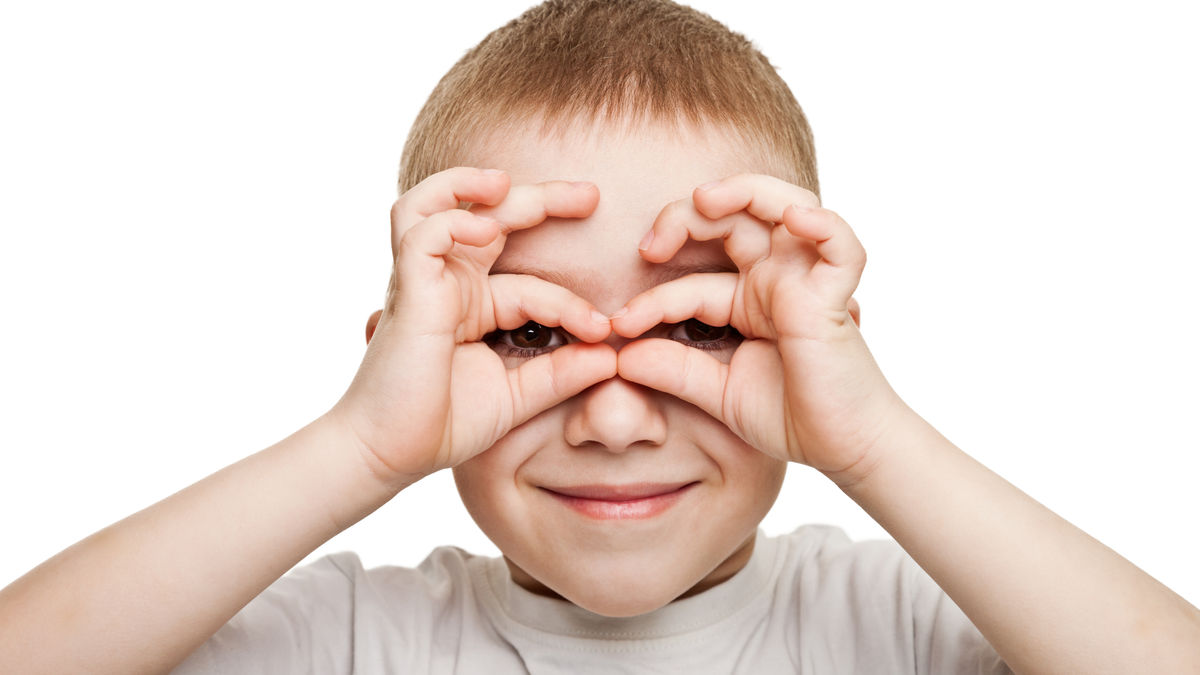Clinical
A monocular myope with coloboma

In this article:
Here is an unusual case that CS shared with the Myopia Profile community involving a child with a unilateral coloboma and resultant vision impairment, with early myopia in the normally sighted eye. How does one manage a young myopic patient who is essentially monocular?
The left eye: very high myopia and coloboma
Coloboma is a rare, potentially blinding disorder caused by failure of optic fissure closure in utero, which may be isolated or paired with systemic abnormalities. Marr et al showed that coloboma is among the ocular pathologies associated with high myopia in early childhood.1 Most patients with coloboma are myopic, with 26% at least moderately myopic with axial lengths of more than 24.7mm.2 Eyes with coloboma have a higher risk of cataract, glaucoma and retina detachment which can lead to further vision loss.
In this patient, the left eye is around 9D myopic with an axial length of almost 26.5mm. Vision is extremely limited. What management is prudent for this left eye?
Most of our colleagues would not treat the left eye, as the eye has minimal visual field and extremely poor acuity. Treating the left eye would incur unnecessary cost and effort with little gain. Hence, it makes more sense to focus on treating the patient's remaining sighted eye.
The right eye: how to manage the low myopia?
At 8 years old, the patient is at the age where the myopia is likely to progress at the fastest rate.3 Therefore, it is important to initiate myopia control on this eye. The commenters suggested either spectacles or contact lenses to help correct his myopic refraction as well as to slow myopia progression.
Spectacles are likely the best option to correct myopia and control progression. They should be made impact resistant to protect the sighted eye as a barrier. Where the new generation of myopia controlling spectacles (DIMS is mentioned) are available, these should provide efficacy similar to the best contact lens options with a higher safety profile. Where these newest myopia controlling spectacles aren't available, commenters also mentioned executive bifocal spectacles which have demonstrated efficacy for myopia control.4
Contact lens options are mentioned by the commenters, with caution, as the patient is monocular. Daily disposable myopia controlling contact lenses have strong myopia control efficacy and the lowest risk of infection of any contact lens intervention, being around 1 per 5,000 patient-years of wear, but this risk may be considered too high to bear with a monocular child. The risks and benefits would need a careful balance if contact lenses were the most effective myopia control strategy available to that practitioner.
Lastly, atropine as a monotherapy could be considered, in an appropriate concentration based on current research (at least 0.025%).4 With safety as the utmost priority to protect the remaining eye, a preservative free formulation would be ideal. The post author mentions considering 0.05% atropine as the first treatment choice, after an observation period. Whilst it's highly likely that the right eye will progress, given the child's age,3 an observation period could help to understand that individual child's myopia trajectory to establish a collaborative treatment plan with the child's parent(s).
Take home messages:
- In the monocular patient, safety is the primary consideration to protect the remaining sighted eye. Both spectacle and contact lenses have benefits for myopia correction and control, but where an effective spectacle lens option is available, this is likely to be the first choice to correct myopia and slow its progression.
- Atropine treatment as a monotherapy or, potentially in combination with an optical intervention, could also be considered.
More unusual cases in myopia management
Meet the Authors:
About Connie Gan
Connie is a clinical optometrist from Kedah, Malaysia, who provides comprehensive vision care for children and runs the myopia management service in her clinical practice.
Read Connie's work in many of the case studies published on MyopiaProfile.com. Connie also manages our Myopia Profile and My Kids Vision Instagram and My Kids Vision Facebook platforms.
About Kimberley Ngu
Kimberley is a clinical optometrist from Perth, Australia, with experience in patient education programs, having practiced in both Australia and Singapore.
Read Kimberley's work in many of the case studies published on MyopiaProfile.com. Kimberley also manages our Myopia Profile and My Kids Vision Instagram and My Kids Vision Facebook platforms.
References
- Marr JE, Halliwell-Ewen J, Fisher B, Soler L, Ainsworth JR. Associations of high myopia in childhood. Eye. 2001 Jan;15(1):70-4. (link)
- Varela MD, Huryn LA, Hufnagel RB, Zein WM, Blain D, Brooks BP. Ocular and Systemic Findings in Adults with Uveal Coloboma. Ophthalmology. 2020 May 17. (link)
- Chua SY, Sabanayagam C, Cheung YB, Chia A, Valenzuela RK, Tan D, Wong TY, Cheng CY, Saw SM. Age of onset of myopia predicts risk of high myopia in later childhood in myopic Singapore children. Ophthalmic Physiol Opt. 2016 Jul;36(4):388-94. (link)
- Brennan NA, Toubouti YM, Cheng X, Bullimore MA. Efficacy in myopia control. Prog Retin Eye Res. 2020 Nov 27:100923. (link)[link to Myopia Profile paper review]
Enormous thanks to our visionary sponsors
Myopia Profile’s growth into a world leading platform has been made possible through the support of our visionary sponsors, who share our mission to improve children’s vision care worldwide. Click on their logos to learn about how these companies are innovating and developing resources with us to support you in managing your patients with myopia.











